The Importance of Brand in the A/E/C Industry
When you think “brand,” do you think Tide or Starbucks?
If so, you might not have a good grasp on what a brand really is, and how important it could be to the health of your architecture, engineering, or construction firm.
Fortunately, in recent years the A/E/C industry has started to “get it.” I’ve always believed that this industry tends to be several years behind other industries when it comes to sales and marketing advancements (just look at all the firms still avoiding social media!). Yet, branding has been around forever, but far too many firms have avoided thinking that way, erroneously believing that branding was for products.
Or, perhaps just as often, A/E/C design and construction professionals confuse brand with logo, letterhead, wordmark, company colors, or any other corporate identity materials. These must reflect your brand, but they are not your brand!
So how do you define brand or branding?
I’ve read many books on topic, and keep coming back to the landmark book, The 22 Immutable Laws of Branding: How to Build a Product or Service into a World-Class Brand by Al Ries and Laura Ries. My copy is yellowed and dog-eared, but maintains an important place on my bookshelf! According to the authors, “From a business point of view, branding in the marketplace is very similar to branding on the ranch. A branding program should be designed to differentiate your cow from all the other cattle on the range. Even if all the cattle on the range look pretty much alike. A successful branding program is based on the concept of singularity. It creates in the mind of the prospect the perception that there is no product on the market quite like your product.”
Brands are perceptions. Brands are differentiators. And branding is thus an activity to create the perception that there’s no other product like yours, differentiating you from the competition.
Sounds a lot like marketing strategy to me! But exactly how can this concept apply to your company? For starters, think of your company as the “product.” (And, as a champion of the importance of personal branding, I think you should think of yourself in the same way!)
Craig Park, FSMPS, Assoc. AIA, principal consultant at The Sextant Group [LINK: http://thesextantgroup.com/ ] and author of The Architecture of Image: Branding Your Professional Practice [LINK: http://craigpark.com/aoi.htm ], is one of the new crop of industry professionals working to elevate the importance of branding in the A/E/C industry. He defines brand as three related components: brand identity (“How you and your employees see your company and its service offerings”), brand image (“How your clients, customers, vendors, collaborators, and potential clients view your company”), and brand equity (“The intrinsic financial benefit your brand brings to the fiscal value of your practice, positively or negatively”).
According to Craig, there are three big ideas that A/E/C firms need to understand about branding. “First, for your brand to be successful, it has to begin as authentic. Your brand reflects your culture. Second, your brand must build on your history and reflect your practice. Your brand demonstrates how you collaborate as thought leaders with your clients and those allied in your field. Third, your brand should also challenge you to move beyond what you know and allow you to become what you want to be. Your brand is how you communicate your vision, framed by your reality.”
Another industry thought leader working to help professionals understand the importance of brand is Perryn Olson, CPSM, CCMP. Currently an account director with Hinge [LINK: http://www.hingemarketing.com/ ], Perryn is the former president of The Brand Constructors and author of Construction Executive’s Guide to Brand Marketing [LINK: http://www.amazon.com/Construction-Executives-Guide-Brand-Marketing/dp/1500479764 ]. He believes that “Your brand is much more than the sign hanging on the outside of your building. It’s the collection of experiences someone has with your company, such as seeing your job sites, interacting with your receptionist who answers the phone, and visiting your offices. It also includes your truck drivers’ courtesy (or lack thereof)…it’s your concern for others and your participation in your community. It’s the way your people represent your company in everything they do and say….essentially, your brand is what people perceive your company to be.”
In Construction Executives Guide to Brand Marketing, Perryn outlines the benefits of having a strong brand:
• Make your company appear established and more successful than it may be
• Lower your client acquisition costs and increase your hit rates
• Reduce advertising and marketing costs
• Increase employee retention and company morale
• Attract the right projects and the best employees
• Create and stabilize manageable growth for long-term success
• Strike fear and loathing into the hearts of your competitors and make your company appear unbeatable
For all that a brand – or branding is – there are things that it is not. Substance 151, Benefit LLC [LINK: http://www.substance151.com/] provides marketing consulting services to professional services firms, including A/E/C. The firm’s principal and creative director, Ida Cheinman, is very active in the A/E/C community and she notes: "Commoditization is an ever-growing problem for A/E/C firms – and for professional services firms in general. A compelling and differentiating brand is your first line of defense against being perceived as indistinguishable from everybody else. It's the branding expert's job to help a company push their brand beyond category conventions so that it communicates true and unique value. In the Substance151 publication, Your Brand Toolbox [LINK: http://www.substance151.com/download/brand-toolbox/], they outline a number of branding pitfalls that challenge firms:
• Thinking your brand is your logo
• Building a brand that can’t achieve your business goals
• Believing your brand only lives in your marketing
• Setting and forgetting your brand – for decades
• Not putting yourself in your audiences shoes
• Being too humble
From these examples, you can see the concepts of brand and branding come into greater focus. Your company’s brand is your culture and history. It is the place you occupy in the market, and the perception that clients, prospects, and employees have of your firm. It is marketing and operations and customer service. It is the reason why clients hire you and potential employees seek you out. It is the foundation upon what almost everything in your firm is built.
But it is not just a logo nor something only the purvey of the marketing department. It must align with your firm is and where you are going. It has to be dynamic and cultural, and must speak to your stakeholders.
Whether you realize it or not, your company already has a brand. My favorite definition of brand is “what someone says about your behind your back.” And while this comment was referring to personal brand, it just as easily equates to company brands. What do current clients and employees say about your company? What about prospects and vendors and competitors? That is your brand.
And if your brand is not positive, you’ve got some work to do! In fact, a neutral or lesser-known brand is far more preferable to a negative brand.
To help A/E/C and other professional services firms with their branding strategy, Hinge has created the Brand Building Guide for Professional Services Firms [LINK: http://www.hingemarketing.com/library/article/the_brand_building_guide/ ] and Re:Branding Kit [LINK: http://www.hingemarketing.com/library/article/the_hinge_rebranding_kit/ ]. Written by the staff of Hinge, including Sylvia Montgomery, CPSM, a senior partner who heads their A/E/C practice, these free downloads provide guidance to firms looking to better understand their brand. Within the Re:Branding Kit, Hinge offers the following definition: “Your brand is the totality of how your audience sees, talks about and experiences your firm.” Based upon their extensive research, they believe that there are five major trends that will shape the future of your company:
1. Buyers want relevant experience
2. Buyers are changing how they search for solutions
3. Your website can make or break you
4. Trust is being built differently
5. Geography is collapsing
With these trends in mind, Hinge then offers a checklist to determine whether or not it is time for your company to embark on a rebranding initiative. If two or more of these apply, they believe the time to rebrand is now:
1. Are you getting fewer leads than in the past?
2. Are you entering a new market?
3. Are you introducing significant new services?
4. Has your firm’s growth slowed or stopped?
5. Have new competitors entered the marketplace?
6. Does your visual brand look tired compared to the competition?
7. Do you struggle to describe how your firm is different?
8. Are you losing a higher percentage of competitive bid situations than in the past?
9. Has your firm changed significantly since you last adjusted your brand?
10. Are you struggling to attract top talent?
11. Have your customers changed significantly?
12. Are you trying to figure out how to take your firm to the next level?
From my network of A/E/C marketing professionals throughout the United States, I know that a lot of firms suffer from many of these issues. There is much brand confusion in the marketplace because clients view firms are looking alike (all the cows on the range look the same!). Mergers and acquisitions have led to brand challenges as firms with different brands come together. A/E/C firm leadership continues to ignore their marketing professionals, who are trying to make brand top-of-mind because of that mentality that branding is for products only.
Branding is not for wimps nor for the faint of heart. And yet the firms that will thrive in tomorrow’s economy will be the ones that understand how critical their brand really is – and how brand must permeate every nook and cranny of their company.
As your company moves forward on your branding journey, Craig Park has some sage advice: “Your goal and brand promise should be to recognize your culture’s unique skills, find how you can collaborate to build brand equity, and learn how you can communicate the value of your brand to your clients. You will build your brand and grow your practice. Begin with a vision aligned with your culture, build a strong brand by collaborating in the delivery of your promise, and become the brand you envision by communicating your value every day throughout your organization. The result will be the foundation for a unique brand and an enduring practices that provides you, your staff, your firm, and your clients with a memorable – and remarkable – experience!”
So where do you go from here? The books and publications referenced in this post are excellent starting points. Purchase them or download them. Read them diligently. Figure how the advice applies to your firm. And by all means, don’t just sit there and let this knowledge go to waste. Become your company’s brand evangelist, and get things rolling!
The Importance of Brand in the A/E/C Industry
When you think “brand,” do you think Tide or Starbucks?
If so, you might not have a good grasp on what a brand really is, and how important it could be to the health of your architecture, engineering, or construction firm.
Fortunately, in recent years the A/E/C industry has started to “get it.” I’ve always believed that this industry tends to be several years behind other industries when it comes to sales and marketing advancements (just look at all the firms still avoiding social media!). Yet, branding has been around forever, but far too many firms have avoided thinking that way, erroneously believing that branding was for products.
Or, perhaps just as often, A/E/C design and construction professionals confuse brand with logo, letterhead, wordmark, company colors, or any other corporate identity materials. These must reflect your brand, but they are not your brand!
So how do you define brand or branding?
I’ve read many books on topic, and keep coming back to the landmark book, The 22 Immutable Laws of Branding: How to Build a Product or Service into a World-Class Brand by Al Ries and Laura Ries. My copy is yellowed and dog-eared, but maintains an important place on my bookshelf! According to the authors, “From a business point of view, branding in the marketplace is very similar to branding on the ranch. A branding program should be designed to differentiate your cow from all the other cattle on the range. Even if all the cattle on the range look pretty much alike. A successful branding program is based on the concept of singularity. It creates in the mind of the prospect the perception that there is no product on the market quite like your product.”
Brands are perceptions. Brands are differentiators. And branding is thus an activity to create the perception that there’s no other product like yours, differentiating you from the competition.
Sounds a lot like marketing strategy to me! But exactly how can this concept apply to your company? For starters, think of your company as the “product.” (And, as a champion of the importance of personal branding, I think you should think of yourself in the same way!)
Craig Park, FSMPS, Assoc. AIA, principal consultant at The Sextant Group [LINK: http://thesextantgroup.com/ ] and author of The Architecture of Image: Branding Your Professional Practice [LINK: http://craigpark.com/aoi.htm ], is one of the new crop of industry professionals working to elevate the importance of branding in the A/E/C industry. He defines brand as three related components: brand identity (“How you and your employees see your company and its service offerings”), brand image (“How your clients, customers, vendors, collaborators, and potential clients view your company”), and brand equity (“The intrinsic financial benefit your brand brings to the fiscal value of your practice, positively or negatively”).
According to Craig, there are three big ideas that A/E/C firms need to understand about branding. “First, for your brand to be successful, it has to begin as authentic. Your brand reflects your culture. Second, your brand must build on your history and reflect your practice. Your brand demonstrates how you collaborate as thought leaders with your clients and those allied in your field. Third, your brand should also challenge you to move beyond what you know and allow you to become what you want to be. Your brand is how you communicate your vision, framed by your reality.”
Another industry thought leader working to help professionals understand the importance of brand is Perryn Olson, CPSM, CCMP. Currently an account director with Hinge [LINK: http://www.hingemarketing.com/ ], Perryn is the former president of The Brand Constructors and author of Construction Executive’s Guide to Brand Marketing [LINK: http://www.amazon.com/Construction-Executives-Guide-Brand-Marketing/dp/1500479764 ]. He believes that “Your brand is much more than the sign hanging on the outside of your building. It’s the collection of experiences someone has with your company, such as seeing your job sites, interacting with your receptionist who answers the phone, and visiting your offices. It also includes your truck drivers’ courtesy (or lack thereof)…it’s your concern for others and your participation in your community. It’s the way your people represent your company in everything they do and say….essentially, your brand is what people perceive your company to be.”
In Construction Executives Guide to Brand Marketing, Perryn outlines the benefits of having a strong brand:
• Make your company appear established and more successful than it may be
• Lower your client acquisition costs and increase your hit rates
• Reduce advertising and marketing costs
• Increase employee retention and company morale
• Attract the right projects and the best employees
• Create and stabilize manageable growth for long-term success
• Strike fear and loathing into the hearts of your competitors and make your company appear unbeatable
For all that a brand – or branding is – there are things that it is not. Substance 151, Benefit LLC [LINK: http://www.substance151.com/] provides marketing consulting services to professional services firms, including A/E/C. The firm’s principal and creative director, Ida Cheinman, is very active in the A/E/C community and she notes: "Commoditization is an ever-growing problem for A/E/C firms – and for professional services firms in general. A compelling and differentiating brand is your first line of defense against being perceived as indistinguishable from everybody else. It's the branding expert's job to help a company push their brand beyond category conventions so that it communicates true and unique value. In the Substance151 publication, Your Brand Toolbox [LINK: http://www.substance151.com/download/brand-toolbox/], they outline a number of branding pitfalls that challenge firms:
• Thinking your brand is your logo
• Building a brand that can’t achieve your business goals
• Believing your brand only lives in your marketing
• Setting and forgetting your brand – for decades
• Not putting yourself in your audiences shoes
• Being too humble
From these examples, you can see the concepts of brand and branding come into greater focus. Your company’s brand is your culture and history. It is the place you occupy in the market, and the perception that clients, prospects, and employees have of your firm. It is marketing and operations and customer service. It is the reason why clients hire you and potential employees seek you out. It is the foundation upon what almost everything in your firm is built.
But it is not just a logo nor something only the purvey of the marketing department. It must align with your firm is and where you are going. It has to be dynamic and cultural, and must speak to your stakeholders.
Whether you realize it or not, your company already has a brand. My favorite definition of brand is “what someone says about your behind your back.” And while this comment was referring to personal brand, it just as easily equates to company brands. What do current clients and employees say about your company? What about prospects and vendors and competitors? That is your brand.
And if your brand is not positive, you’ve got some work to do! In fact, a neutral or lesser-known brand is far more preferable to a negative brand.
To help A/E/C and other professional services firms with their branding strategy, Hinge has created the Brand Building Guide for Professional Services Firms [LINK: http://www.hingemarketing.com/library/article/the_brand_building_guide/ ] and Re:Branding Kit [LINK: http://www.hingemarketing.com/library/article/the_hinge_rebranding_kit/ ]. Written by the staff of Hinge, including Sylvia Montgomery, CPSM, a senior partner who heads their A/E/C practice, these free downloads provide guidance to firms looking to better understand their brand. Within the Re:Branding Kit, Hinge offers the following definition: “Your brand is the totality of how your audience sees, talks about and experiences your firm.” Based upon their extensive research, they believe that there are five major trends that will shape the future of your company:
1. Buyers want relevant experience
2. Buyers are changing how they search for solutions
3. Your website can make or break you
4. Trust is being built differently
5. Geography is collapsing
With these trends in mind, Hinge then offers a checklist to determine whether or not it is time for your company to embark on a rebranding initiative. If two or more of these apply, they believe the time to rebrand is now:
1. Are you getting fewer leads than in the past?
2. Are you entering a new market?
3. Are you introducing significant new services?
4. Has your firm’s growth slowed or stopped?
5. Have new competitors entered the marketplace?
6. Does your visual brand look tired compared to the competition?
7. Do you struggle to describe how your firm is different?
8. Are you losing a higher percentage of competitive bid situations than in the past?
9. Has your firm changed significantly since you last adjusted your brand?
10. Are you struggling to attract top talent?
11. Have your customers changed significantly?
12. Are you trying to figure out how to take your firm to the next level?
From my network of A/E/C marketing professionals throughout the United States, I know that a lot of firms suffer from many of these issues. There is much brand confusion in the marketplace because clients view firms are looking alike (all the cows on the range look the same!). Mergers and acquisitions have led to brand challenges as firms with different brands come together. A/E/C firm leadership continues to ignore their marketing professionals, who are trying to make brand top-of-mind because of that mentality that branding is for products only.
Branding is not for wimps nor for the faint of heart. And yet the firms that will thrive in tomorrow’s economy will be the ones that understand how critical their brand really is – and how brand must permeate every nook and cranny of their company.
As your company moves forward on your branding journey, Craig Park has some sage advice: “Your goal and brand promise should be to recognize your culture’s unique skills, find how you can collaborate to build brand equity, and learn how you can communicate the value of your brand to your clients. You will build your brand and grow your practice. Begin with a vision aligned with your culture, build a strong brand by collaborating in the delivery of your promise, and become the brand you envision by communicating your value every day throughout your organization. The result will be the foundation for a unique brand and an enduring practices that provides you, your staff, your firm, and your clients with a memorable – and remarkable – experience!”
So where do you go from here? The books and publications referenced in this post are excellent starting points. Purchase them or download them. Read them diligently. Figure how the advice applies to your firm. And by all means, don’t just sit there and let this knowledge go to waste. Become your company’s brand evangelist, and get things rolling!
The Importance of Brand in the A/E/C Industry
When you think “brand,” do you think Tide or Starbucks?
If so, you might not have a good grasp on what a brand really is, and how important it could be to the health of your architecture, engineering, or construction firm.
Fortunately, in recent years the A/E/C industry has started to “get it.” I’ve always believed that this industry tends to be several years behind other industries when it comes to sales and marketing advancements (just look at all the firms still avoiding social media!). Yet, branding has been around forever, but far too many firms have avoided thinking that way, erroneously believing that branding was for products.
Or, perhaps just as often, A/E/C design and construction professionals confuse brand with logo, letterhead, wordmark, company colors, or any other corporate identity materials. These must reflect your brand, but they are not your brand!
So how do you define brand or branding?
I’ve read many books on topic, and keep coming back to the landmark book, The 22 Immutable Laws of Branding: How to Build a Product or Service into a World-Class Brand by Al Ries and Laura Ries. My copy is yellowed and dog-eared, but maintains an important place on my bookshelf! According to the authors, “From a business point of view, branding in the marketplace is very similar to branding on the ranch. A branding program should be designed to differentiate your cow from all the other cattle on the range. Even if all the cattle on the range look pretty much alike. A successful branding program is based on the concept of singularity. It creates in the mind of the prospect the perception that there is no product on the market quite like your product.”
Brands are perceptions. Brands are differentiators. And branding is thus an activity to create the perception that there’s no other product like yours, differentiating you from the competition.
Sounds a lot like marketing strategy to me! But exactly how can this concept apply to your company? For starters, think of your company as the “product.” (And, as a champion of the importance of personal branding, I think you should think of yourself in the same way!)
Craig Park, FSMPS, Assoc. AIA, principal consultant at The Sextant Group [LINK: http://thesextantgroup.com/ ] and author of The Architecture of Image: Branding Your Professional Practice [LINK: http://craigpark.com/aoi.htm ], is one of the new crop of industry professionals working to elevate the importance of branding in the A/E/C industry. He defines brand as three related components: brand identity (“How you and your employees see your company and its service offerings”), brand image (“How your clients, customers, vendors, collaborators, and potential clients view your company”), and brand equity (“The intrinsic financial benefit your brand brings to the fiscal value of your practice, positively or negatively”).
According to Craig, there are three big ideas that A/E/C firms need to understand about branding. “First, for your brand to be successful, it has to begin as authentic. Your brand reflects your culture. Second, your brand must build on your history and reflect your practice. Your brand demonstrates how you collaborate as thought leaders with your clients and those allied in your field. Third, your brand should also challenge you to move beyond what you know and allow you to become what you want to be. Your brand is how you communicate your vision, framed by your reality.”
Another industry thought leader working to help professionals understand the importance of brand is Perryn Olson, CPSM, CCMP. Currently an account director with Hinge [LINK: http://www.hingemarketing.com/ ], Perryn is the former president of The Brand Constructors and author of Construction Executive’s Guide to Brand Marketing [LINK: http://www.amazon.com/Construction-Executives-Guide-Brand-Marketing/dp/1500479764 ]. He believes that “Your brand is much more than the sign hanging on the outside of your building. It’s the collection of experiences someone has with your company, such as seeing your job sites, interacting with your receptionist who answers the phone, and visiting your offices. It also includes your truck drivers’ courtesy (or lack thereof)…it’s your concern for others and your participation in your community. It’s the way your people represent your company in everything they do and say….essentially, your brand is what people perceive your company to be.”
In Construction Executives Guide to Brand Marketing, Perryn outlines the benefits of having a strong brand:
• Make your company appear established and more successful than it may be
• Lower your client acquisition costs and increase your hit rates
• Reduce advertising and marketing costs
• Increase employee retention and company morale
• Attract the right projects and the best employees
• Create and stabilize manageable growth for long-term success
• Strike fear and loathing into the hearts of your competitors and make your company appear unbeatable
For all that a brand – or branding is – there are things that it is not. Substance 151, Benefit LLC [LINK: http://www.substance151.com/] provides marketing consulting services to professional services firms, including A/E/C. The firm’s principal and creative director, Ida Cheinman, is very active in the A/E/C community and she notes: "Commoditization is an ever-growing problem for A/E/C firms – and for professional services firms in general. A compelling and differentiating brand is your first line of defense against being perceived as indistinguishable from everybody else. It's the branding expert's job to help a company push their brand beyond category conventions so that it communicates true and unique value. In the Substance151 publication, Your Brand Toolbox [LINK: http://www.substance151.com/download/brand-toolbox/], they outline a number of branding pitfalls that challenge firms:
• Thinking your brand is your logo
• Building a brand that can’t achieve your business goals
• Believing your brand only lives in your marketing
• Setting and forgetting your brand – for decades
• Not putting yourself in your audiences shoes
• Being too humble
From these examples, you can see the concepts of brand and branding come into greater focus. Your company’s brand is your culture and history. It is the place you occupy in the market, and the perception that clients, prospects, and employees have of your firm. It is marketing and operations and customer service. It is the reason why clients hire you and potential employees seek you out. It is the foundation upon what almost everything in your firm is built.
But it is not just a logo nor something only the purvey of the marketing department. It must align with your firm is and where you are going. It has to be dynamic and cultural, and must speak to your stakeholders.
Whether you realize it or not, your company already has a brand. My favorite definition of brand is “what someone says about your behind your back.” And while this comment was referring to personal brand, it just as easily equates to company brands. What do current clients and employees say about your company? What about prospects and vendors and competitors? That is your brand.
And if your brand is not positive, you’ve got some work to do! In fact, a neutral or lesser-known brand is far more preferable to a negative brand.
To help A/E/C and other professional services firms with their branding strategy, Hinge has created the Brand Building Guide for Professional Services Firms [LINK: http://www.hingemarketing.com/library/article/the_brand_building_guide/ ] and Re:Branding Kit [LINK: http://www.hingemarketing.com/library/article/the_hinge_rebranding_kit/ ]. Written by the staff of Hinge, including Sylvia Montgomery, CPSM, a senior partner who heads their A/E/C practice, these free downloads provide guidance to firms looking to better understand their brand. Within the Re:Branding Kit, Hinge offers the following definition: “Your brand is the totality of how your audience sees, talks about and experiences your firm.” Based upon their extensive research, they believe that there are five major trends that will shape the future of your company:
1. Buyers want relevant experience
2. Buyers are changing how they search for solutions
3. Your website can make or break you
4. Trust is being built differently
5. Geography is collapsing
With these trends in mind, Hinge then offers a checklist to determine whether or not it is time for your company to embark on a rebranding initiative. If two or more of these apply, they believe the time to rebrand is now:
1. Are you getting fewer leads than in the past?
2. Are you entering a new market?
3. Are you introducing significant new services?
4. Has your firm’s growth slowed or stopped?
5. Have new competitors entered the marketplace?
6. Does your visual brand look tired compared to the competition?
7. Do you struggle to describe how your firm is different?
8. Are you losing a higher percentage of competitive bid situations than in the past?
9. Has your firm changed significantly since you last adjusted your brand?
10. Are you struggling to attract top talent?
11. Have your customers changed significantly?
12. Are you trying to figure out how to take your firm to the next level?
From my network of A/E/C marketing professionals throughout the United States, I know that a lot of firms suffer from many of these issues. There is much brand confusion in the marketplace because clients view firms are looking alike (all the cows on the range look the same!). Mergers and acquisitions have led to brand challenges as firms with different brands come together. A/E/C firm leadership continues to ignore their marketing professionals, who are trying to make brand top-of-mind because of that mentality that branding is for products only.
Branding is not for wimps nor for the faint of heart. And yet the firms that will thrive in tomorrow’s economy will be the ones that understand how critical their brand really is – and how brand must permeate every nook and cranny of their company.
As your company moves forward on your branding journey, Craig Park has some sage advice: “Your goal and brand promise should be to recognize your culture’s unique skills, find how you can collaborate to build brand equity, and learn how you can communicate the value of your brand to your clients. You will build your brand and grow your practice. Begin with a vision aligned with your culture, build a strong brand by collaborating in the delivery of your promise, and become the brand you envision by communicating your value every day throughout your organization. The result will be the foundation for a unique brand and an enduring practices that provides you, your staff, your firm, and your clients with a memorable – and remarkable – experience!”
So where do you go from here? The books and publications referenced in this post are excellent starting points. Purchase them or download them. Read them diligently. Figure how the advice applies to your firm. And by all means, don’t just sit there and let this knowledge go to waste. Become your company’s brand evangelist, and get things rolling!
When you think “brand,” do you think Tide or Starbucks?
If so, you might not have a good grasp on what a brand really is, and how important it could be to the health of your architecture, engineering, or construction firm.
Fortunately, in recent years the A/E/C industry has started to “get it.” I’ve always believed that this industry tends to be several years behind other industries when it comes to sales and marketing advancements (just look at all the firms still avoiding social media!). Yet, branding has been around forever, but far too many firms have avoided thinking that way, erroneously believing that branding was for products.
Or, perhaps just as often, A/E/C design and construction professionals confuse brand with logo, letterhead, wordmark, company colors, or any other corporate identity materials. These must reflect your brand, but they are not your brand!
So how do you define brand or branding?
I’ve read many books on topic, and keep coming back to the landmark book, The 22 Immutable Laws of Branding: How to Build a Product or Service into a World-Class Brand by Al Ries and Laura Ries. My copy is yellowed and dog-eared, but maintains an important place on my bookshelf! According to the authors, “From a business point of view, branding in the marketplace is very similar to branding on the ranch. A branding program should be designed to differentiate your cow from all the other cattle on the range. Even if all the cattle on the range look pretty much alike. A successful branding program is based on the concept of singularity. It creates in the mind of the prospect the perception that there is no product on the market quite like your product.”
Brands are perceptions. Brands are differentiators. And branding is thus an activity to create the perception that there’s no other product (service) like yours, differentiating you from the competition.
Sounds a lot like marketing strategy to me! But exactly how can this concept apply to your company? For starters, think of your company as the “product.” (And, as a champion of the importance of personal branding, I think you should think of yourself in the same way!)

Craig Park, FSMPS, Assoc. AIA
Craig Park, FSMPS, Assoc. AIA, principal consultant at The Sextant Group and author of The Architecture of Image: Branding Your Professional Practice, is one of the new crop of industry professionals working to elevate the importance of branding in the A/E/C industry. He defines brand as three related components: brand identity (“How you and your employees see your company and its service offerings”), brand image (“How your clients, customers, vendors, collaborators, and potential clients view your company”), and brand equity (“The intrinsic financial benefit your brand brings to the fiscal value of your practice, positively or negatively”).
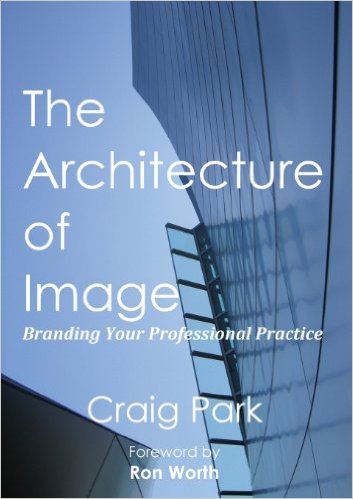
According to Craig, there are three big ideas that A/E/C firms need to understand about branding. “First, for your brand to be successful, it has to begin as authentic. Your brand reflects your culture. Second, your brand must build on your history and reflect your practice. Your brand demonstrates how you collaborate as thought leaders with your clients and those allied in your field. Third, your brand should also challenge you to move beyond what you know and allow you to become what you want to be. Your brand is how you communicate your vision, framed by your reality.”

Perryn Olson, CPSM, CCMP
Another industry thought leader working to help professionals understand the importance of brand is Perryn Olson, CPSM, CCMP. Currently an account director with Hinge, Perryn is the author of Construction Executive’s Guide to Brand Marketing. He believes that “Your brand is much more than the sign hanging on the outside of your building. It’s the collection of experiences someone has with your company, such as seeing your job sites, interacting with your receptionist who answers the phone, and visiting your offices. It also includes your truck drivers’ courtesy (or lack thereof)…it’s your concern for others and your participation in your community. It’s the way your people represent your company in everything they do and say….essentially, your brand is what people perceive your company to be.”

In Construction Executives Guide to Brand Marketing, Perryn outlines the benefits of having a strong brand:
• Make your company appear established and more successful than it may be
• Lower your client acquisition costs and increase your hit rates
• Reduce advertising and marketing costs
• Increase employee retention and company morale
• Attract the right projects and the best employees
• Create and stabilize manageable growth for long-term success
• Strike fear and loathing into the hearts of your competitors and make your company appear unbeatable

Ida Cheinman
For all that a brand – or branding is – there are things that it is not. Substance 151, Benefit LLC provides marketing consulting services to professional services firms, including A/E/C. The firm’s principal and creative director, Ida Cheinman, is very active in the A/E/C community and she notes: "Commoditization is an ever-growing problem for A/E/C firms – and for professional services firms in general. A compelling and differentiating brand is your first line of defense against being perceived as indistinguishable from everybody else. It's the branding expert's job to help a company push their brand beyond category conventions so that it communicates true and unique value."
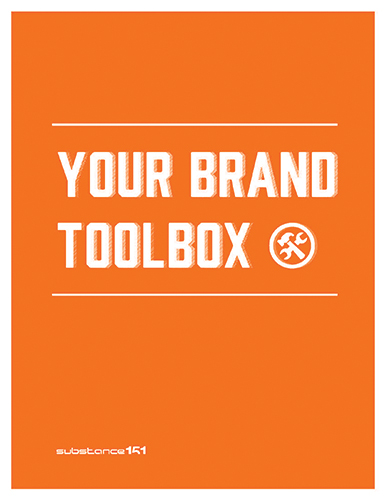
In the Substance151 publication, Your Brand Toolbox, they outline a number of branding pitfalls that challenge firms:
• Thinking your brand is your logo
• Building a brand that can’t achieve your business goals
• Believing your brand only lives in your marketing
• Setting and forgetting your brand – for decades
• Not putting yourself in your audiences shoes
• Being too humble
From these examples, you can see the concepts of brand and branding come into greater focus. Your company’s brand is your culture and history. It is the place you occupy in the market, and the perception that clients, prospects, and employees have of your firm. It is marketing and operations and customer service. It is the reason why clients hire you and potential employees seek you out. It is the foundation upon what almost everything in your firm is built.
But it is not just a logo nor something only the purview of the marketing department. It must align with your firm is and where you are going. It has to be dynamic and cultural, and must speak to your stakeholders.
Whether you realize it or not, your company already has a brand. My favorite definition of brand is “what someone says about your behind your back.” And while this comment was referring to personal brand, it just as easily equates to company brands. What do current clients and employees say about your company? What about prospects and vendors and competitors? That is your brand.
And if your brand is not positive, you’ve got some work to do! In fact, a neutral or lesser-known brand is far more preferable to a negative brand.

Sylvia Montgomery, CPSM
To help A/E/C and other professional services firms with their branding strategy, Hinge has created the Brand Building Guide for Professional Services Firms and Re:Branding Kit. Written by the staff of Hinge, including Sylvia Montgomery, CPSM, a senior partner who heads their A/E/C practice, these free downloads provide guidance to firms looking to better understand their brand. Within the Re:Branding Kit, Hinge offers the following definition: “Your brand is the totality of how your audience sees, talks about and experiences your firm.” Based upon their extensive research, they believe that there are five major trends that will shape the future of your company:
1. Buyers want relevant experience
2. Buyers are changing how they search for solutions
3. Your website can make or break you
4. Trust is being built differently
5. Geography is collapsing
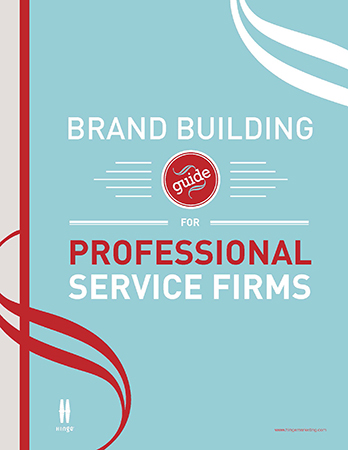
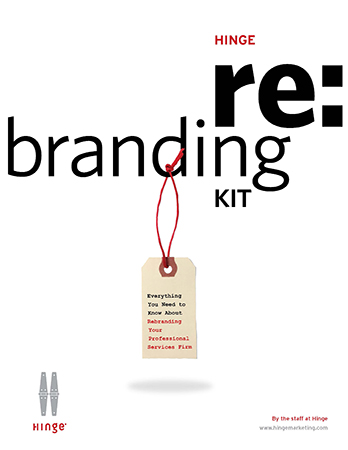
With these trends in mind, Hinge then offers a checklist to determine whether or not it is time for your company to embark on a rebranding initiative. If two or more of these apply, they believe the time to rebrand is now:
1. Are you getting fewer leads than in the past?
2. Are you entering a new market?
3. Are you introducing significant new services?
4. Has your firm’s growth slowed or stopped?
5. Have new competitors entered the marketplace?
6. Does your visual brand look tired compared to the competition?
7. Do you struggle to describe how your firm is different?
8. Are you losing a higher percentage of competitive bid situations than in the past?
9. Has your firm changed significantly since you last adjusted your brand?
10. Are you struggling to attract top talent?
11. Have your customers changed significantly?
12. Are you trying to figure out how to take your firm to the next level?
From my network of A/E/C marketing professionals throughout the United States, I know that a lot of firms suffer from many of these issues. There is much brand confusion in the marketplace because clients view firms as looking alike (all the cows on the range look the same!). Mergers and acquisitions have led to brand challenges as firms with different brands come together. A/E/C firm leadership continues to ignore their marketing professionals, who are trying to make brand top-of-mind because of that mentality that branding is for products only.
Branding is not for wimps nor for the faint of heart. And yet the firms that will thrive in tomorrow’s economy will be the ones that understand how critical their brand really is – and how brand must permeate every nook and cranny of their company.
As your company moves forward on your branding journey, Craig Park has some sage advice: “Your goal and brand promise should be to recognize your culture’s unique skills, find how you can collaborate to build brand equity, and learn how you can communicate the value of your brand to your clients. You will build your brand and grow your practice. Begin with a vision aligned with your culture, build a strong brand by collaborating in the delivery of your promise, and become the brand you envision by communicating your value every day throughout your organization. The result will be the foundation for a unique brand and an enduring practices that provides you, your staff, your firm, and your clients with a memorable – and remarkable – experience!”
So where do you go from here? The books and publications referenced in this post are excellent starting points. Purchase them or download them. Read them diligently. Figure how the advice applies to your firm. And by all means, don’t just sit there and let this knowledge go to waste. Become your company’s brand evangelist, and get things rolling!
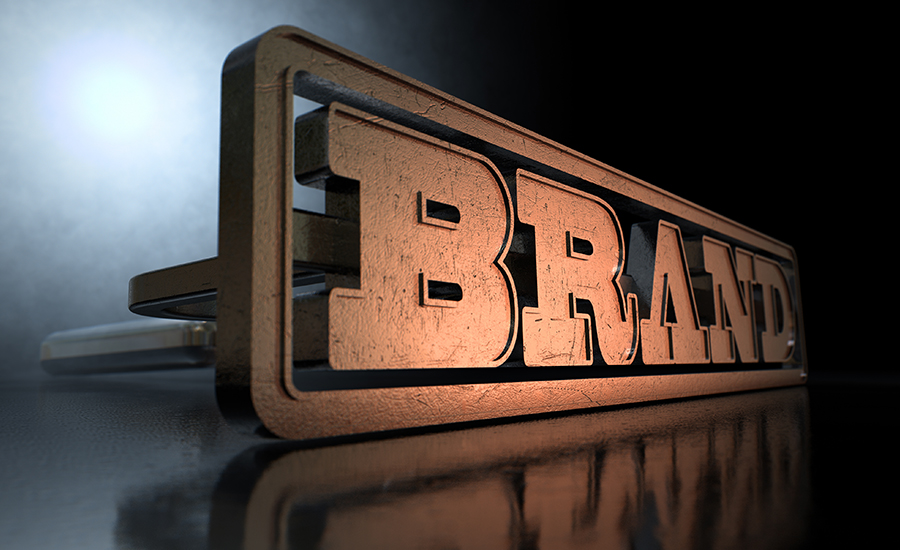

Post a comment to this article
Report Abusive Comment